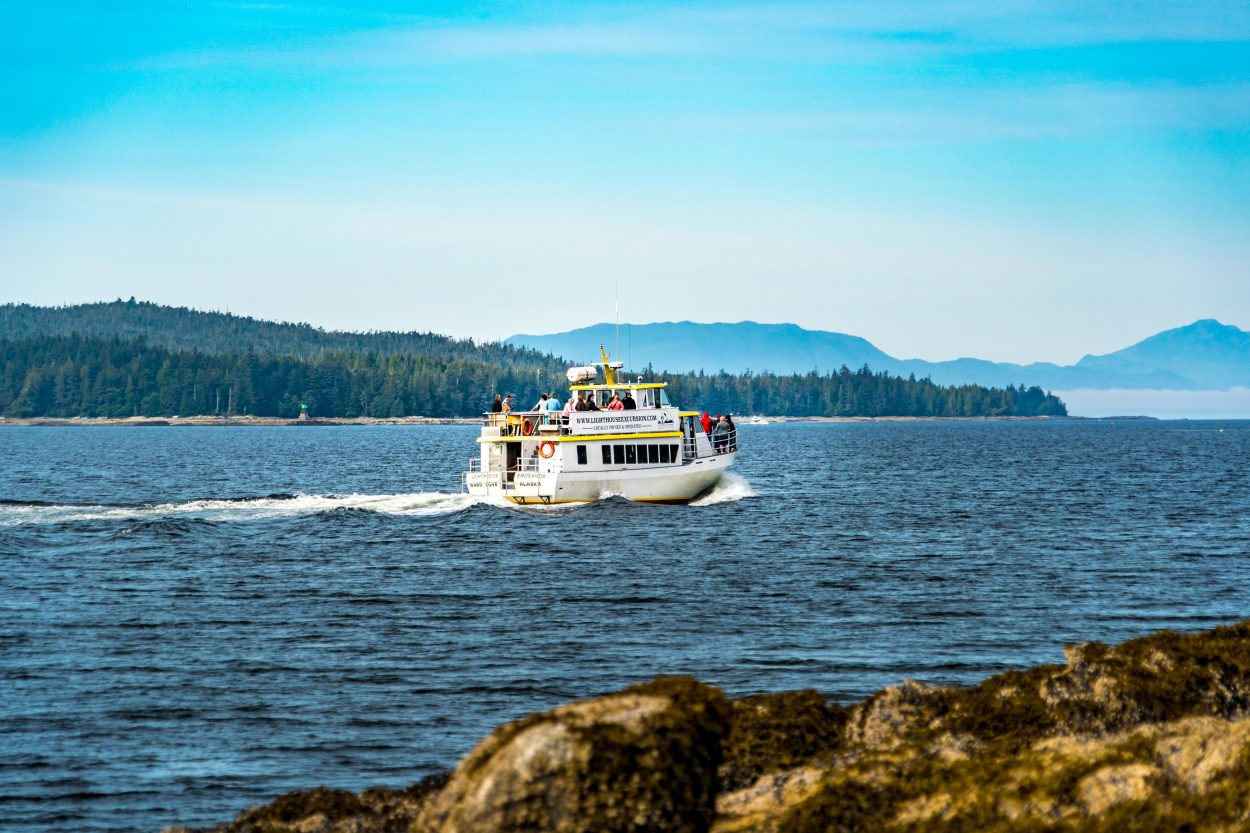Ketchikan businesses are now reckoning with the prospect of another year without tourists. Some managed to limp through 2020, but there’s uncertainty how they’ll survive a second season without cruise visitors.
The pandemic and the ensuing shutdown of cruising in the U.S. has upended Southeast Alaska’s economy. And Lindsey Johnson, owner of Ketchikan Dry Goods, is trying to adapt.
“My store originally was more of a boutique and gift shop, and we’ve been shifting in the last six, seven months to being more of a specialty food store,” Johnson said in an interview.
That’s because the million-plus yearly cruise ship visitors she relies on for the vast majority of her revenue, didn’t arrive last year. And they’re not coming this year, either.
So she’s stocking fewer souvenirs and T-shirts and more hard-to-find foods — from Italian salamis and French cheeses to local specialties like sea asparagus pesto and canned geoduck clams. All for a local market.
“It’s something I can be really proud of in a way that I don’t think I could be proud of, like, selling a shirt, you know?” she said.
It’s also cut how much she relies on tourists for revenue. And she said the new model is keeping her afloat.
“I mean, looking at my numbers, it’s done a really good job replacing that — we’re making it,” Johnson said.
But many businesses in Ketchikan can’t turn on a dime and rejig their business model. Take Lighthouse Excursions — owner Jeff Karlson said his tour company employs about 20 people in a normal year.
“We’ve got two 60-foot vessels,” Karlson told KRBD. “It’s a tour based on the water that operates right out of Ward Cove, here in Ketchikan.”
The three-hour tour is firmly aimed at cruise ship passengers — large groups of tourists who all arrive and depart at about the same time. And while companies with smaller boats, like charter fishermen or kayak rental companies, can lean on independent travelers to offset some of the strain, Karlson said that’s not a viable option for his company.
“It’s difficult for us to book like, two or three people who stayed at a hotel,” he said. “We need to put 20 to 30 people on our boat to justify operating.”
Karlson’s wife, Rebekka Esbjornson, keeps track of the numbers as the company’s shore operations manager. She said Lighthouse Excursions put their gift shop up online in an effort to drum up some business. But…
“Our retail is really branded for our tour. And so we didn’t really expect it to bring in a lot of income. And honestly, it didn’t,” Esbjornson said.
She said the company didn’t see almost any revenue last year. Esbjornson said grants and loans from federal, state and local authorities were critical to allowing them to hang on through 2020. And Karlson said they’ll probably need some more help to make it to next spring if ships don’t return.
An initiative to help jump-start Ketchikan’s tourism economy is already underway. Christa Hagan chairs a group involved in that effort — the Destination/Protocols Work Group of the Ketchikan Visitors Bureau’s RESOURCE Committee — and knows the fallout all too well: her day job is vice president of Taquan Air and Kawanti Adventures, which run sightseeing flights and a rainforest park south of town.
“We will see businesses that will not make it, unfortunately — more than what we saw over the last 18 to 20 months,” Hagan said. “So it’s devastating.”
Devastating not just for business owners, but for employees that rely on tourism jobs for a paycheck — and for the community as a whole. Hagan said she’s worried that Ketchikan could see brain drain if underemployed people leave.
“I’m worried about the intellectual assets that we are losing. Many of our businesses are technically diverse. And we have invested a lot of our time and resources in training these individuals,” she said.
And that could have lasting consequences.
Even so, Hagan — like all the business owners interviewed for this story — remains hopeful that Ketchikan will weather the crisis and be ready for tourists to return, whenever that may be.






